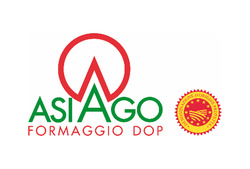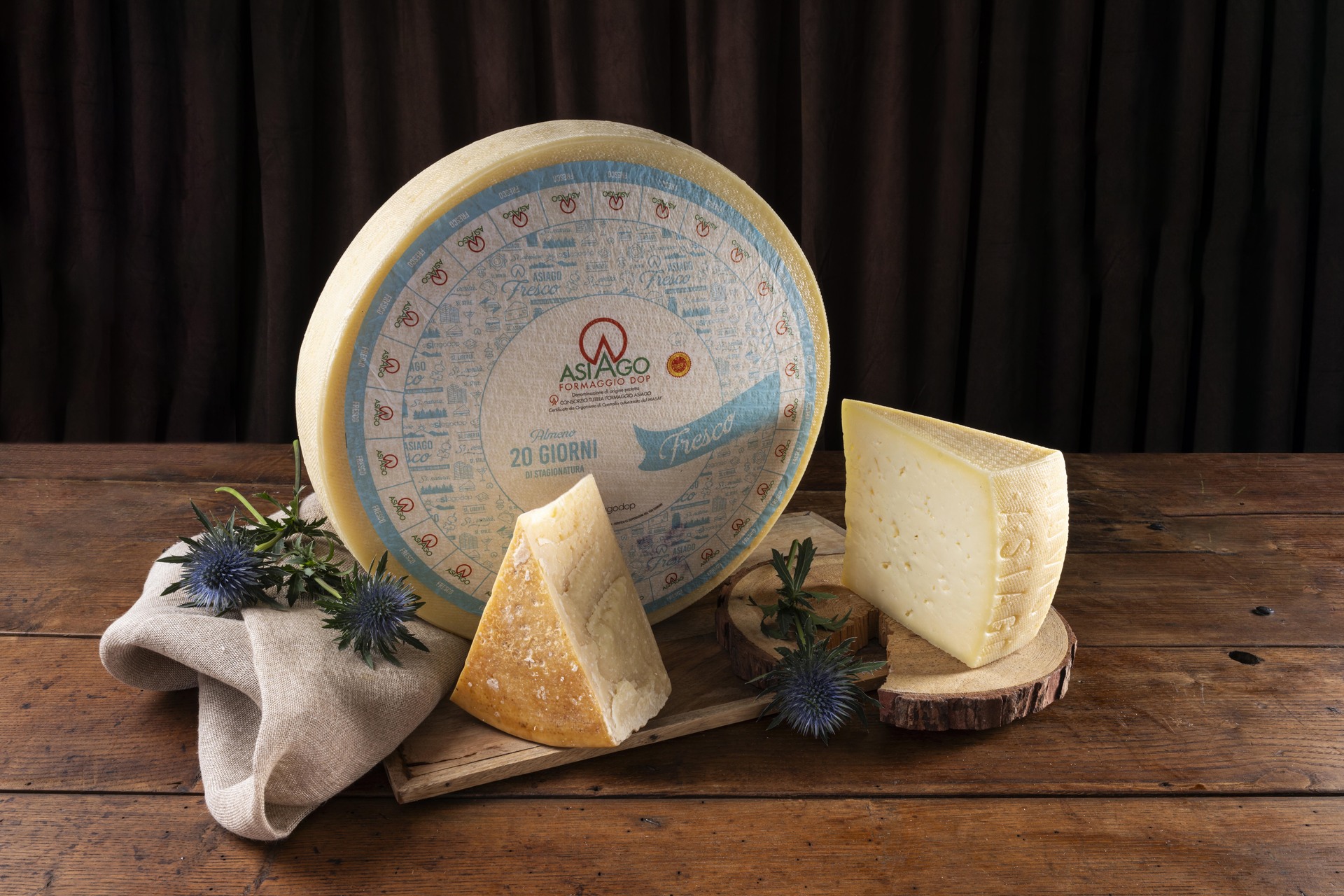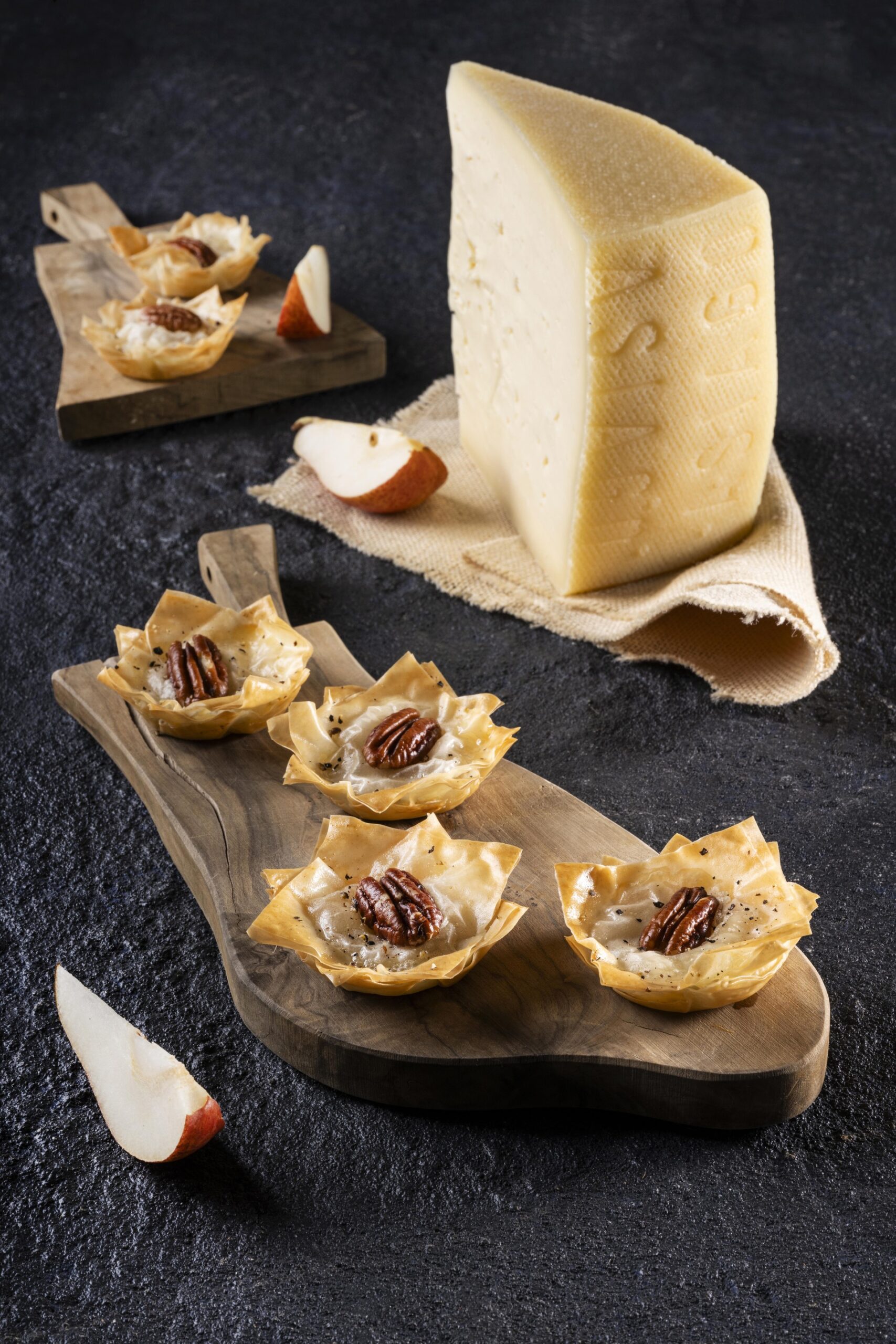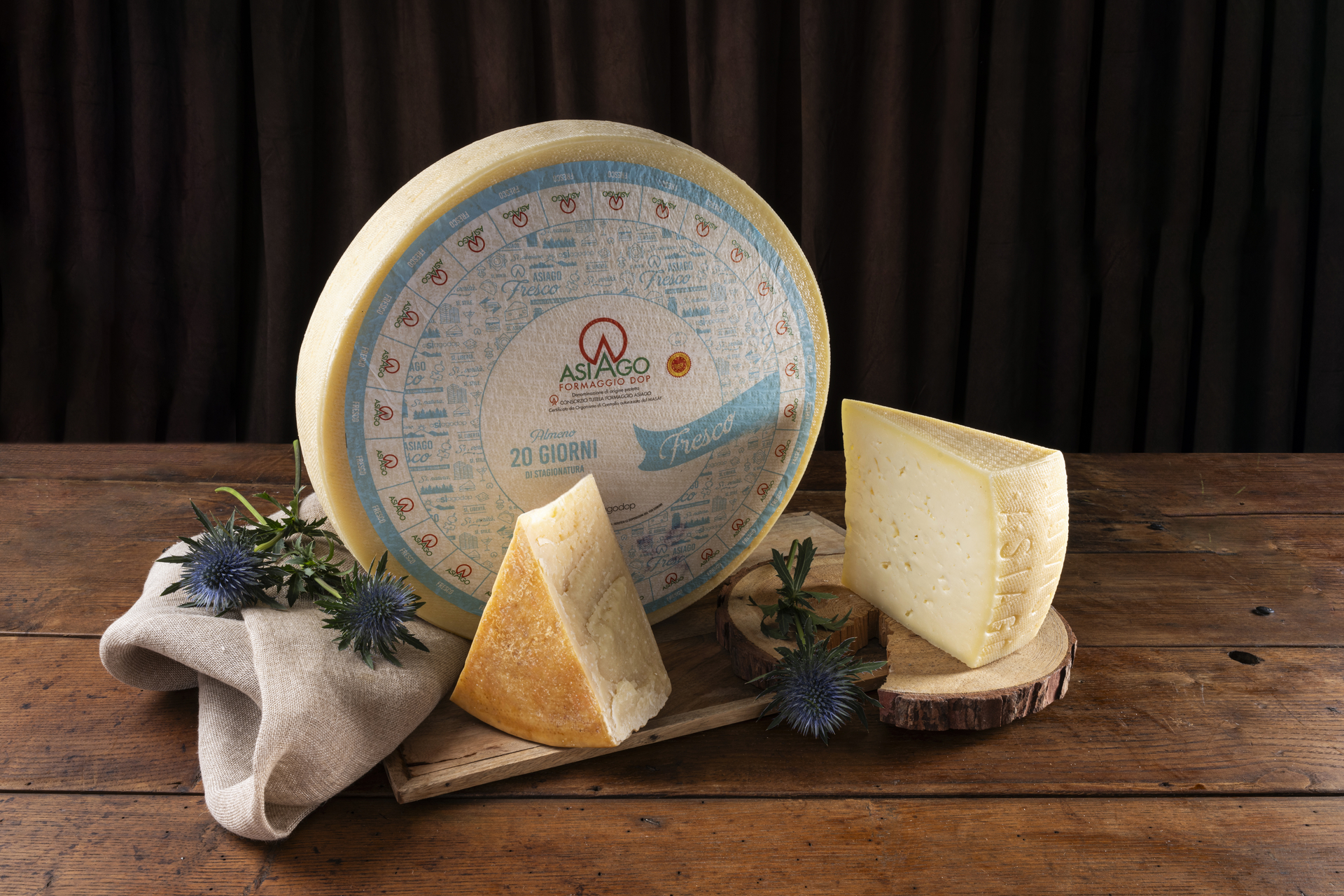By infopadweb 3 April 2024
ASIAGO PDO
 |
 |
DESCRIPTION, HISTORY AND CHARACTERISTICS OF THE PDO
Asiago cheese is the fourth Italian PDO cheese produced from cow’s milk and the only protected designation of origin that includes in the same name two types of product with different processes: Asiago DOP Fresco and Asiago DOP Stagionato.
The origin of Asiago PDO lies in the Asiago Plateau, from which this cheese takes its name. Its presence is testified in written form as far back as the year 1000, while recent archaeological studies indicate that there has been cheese-making activity in the area even before 1,200 BC. Today, work is underway on the hypothesis that cheese-making in the areas of today’s Asiago Plateau and the Sette Comuni is to be dated around five thousand years before Christ. Evidence that would show the millenary importance of the art of cheese-making in these territories and would make this one of the earliest testimonies of cheese production in history.
Over the centuries, cheese production, both sheep’s and cow’s milk, was handed down from generation to generation, gradually switching to the use of cow’s milk alone. The end of the Serenissima Republic of Venice (1797) also marked the end of special agreements and privileges enjoyed by the inhabitants of the Altopiano dei Sette Comuni concerning the wintering of flocks on the Veneto-Friuli plains. In the course of the 19th century, hundreds of families moved to the valley on a permanent basis, taking their cheese-making tradition with them. It was then the events of the First World War that changed the balance and forced the inhabitants of the plateau to flee to other areas. As a result, today Asiago DOP is produced throughout the provinces of Vicenza and Trento and in parts of the provinces of Padua and Treviso.
The oldest Asiago, closest to the tradition of the Highland cheesemakers and with the most intense and enveloping flavour is Seasoned Asiago. In the early 20th century, the tradition of the DOP area, combined with the most innovative cheese-making technology, gave rise to Fresh Asiago, with its sweet and soft taste that has gained international fame. Since 2006, Asiago, which is produced entirely at an altitude of over 600 metres and with milk from farms in this area, has enjoyed special protection from the European Union and has been called ‘Prodotto della Montagna’. From October 2020, Asiago DOP can also be produced with vegetable rennet. The novelty introduces vegetable coagulant as an alternative to bovine rennet and is linked to the thousand-year-old tradition of cheese production on the Asiago Plateau. There is evidence, in fact, that, in this area, wild thistle extract (Cynara cardunculus or Cynara scolimus) was used as a vegetable coagulant as far back as the Bronze Age. An important choice, linking tradition and innovation by responding to new consumer demands.
Asiago DOP Fresco is a cheese with a young flavour and the taste of freshly milked milk, which melts in the mouth to release its sweet and slightly sour notes. It comes in two types: Asiago DOP Fresco, with a maturation period of 20 to 40 days, and Asiago DOP Fresco Riserva, with more than 40 days of maturation, introduced by the new regulations that came into force in October 2020.
Asiago DOP Stagionato is a tasty cheese with a strong personality. Depending on maturity, it can be subdivided into: Asiago Mezzano, with 4-10 months of maturing, with a rich but still sweet taste; Asiago Vecchio, with 10-15 months of maturing, with a strong, slightly piquant flavour; and Asiago Stravecchio, with more than 15 months of maturing, with an intense, extremely tasty flavour.
Consortium
ASIAGO DOP CHEESE PROTECTION CONSORTIUM
The Asiago Cheese Protection Consortium is an association of 37 cheese producers and 6 cheese ripeners representing around 1000 farms. It was founded in 1979 to ensure that only cheese that complies with the production specifications is named, recognised and sold as Asiago DOP, thus handing down the tradition and strengthening its identity.
The Asiago Cheese Protection Consortium has the institutional task of promoting knowledge of the product, protecting it from any attempt at improper use and supervising it in Italy and in the more than fifty countries around the world where it is sold so that consumers can always be certain of the originality of Asiago DOP when they buy. Every wheel of Asiago DOP cheese is guaranteed total compliance with the Production Regulations and a production process whose traceability is guaranteed by the Consortium itself. In fact, the cheese is given an origin marking consisting of a series of words “ASIAGO” and the DOP logo imprinted on the edge of the cheese called “scalzo”, attesting to its origin. To this is added a serial number stamped on each cheese wheel that identifies the producing dairy. All Asiago DOP cheeses are numbered: from the number one can trace the date of production, processing data, and the names of the dairy farmers through a process of complete transparency from production to the table.
Recipe
CRISPY CANAPÉS WITH FRESH ASIAGO DOP, PEPPER PEAR COMPOTE AND PECANS
| 6-8 people Preparation: 20′ Cooking: 25′ |
 |
Ingredients:
– 300 g Kaiser pears
– 150 g fillo dough
– 100 g Asiago DOP
– 24 pecan kernels
– 1 shallot
– 1 bay leaf
– 50 g butter
– black pepper
– salt
Peel the pears, remove the core, cut them into small cubes and cook them in a pan for about 10 minutes with the peeled and finely chopped shallot , a grinding of pepper, a pinch of salt, the bay leaf and 10 g of butter until soft and transparent. Cut the cheese into very small cubes, melt the remaining butter in a bain-marie, and brush the phyllo dough sheets. Cut them into 6-cm squares and arrange one in 12 tartlet molds 6 cm in diameter. Brush them with butter, overlap a second square offset from the first, brush it with more butter, and fill the tartlet with the cooled, bay leaf-removed pears and 2/3 of the Asiago DOP. Cover with the remaining phyllo dough squares, brush them with butter, sprinkle with the remaining Asiago DOP, arrange half a pecan kernel in the center and bake in a preheated oven at 180° for 15 minutes.




